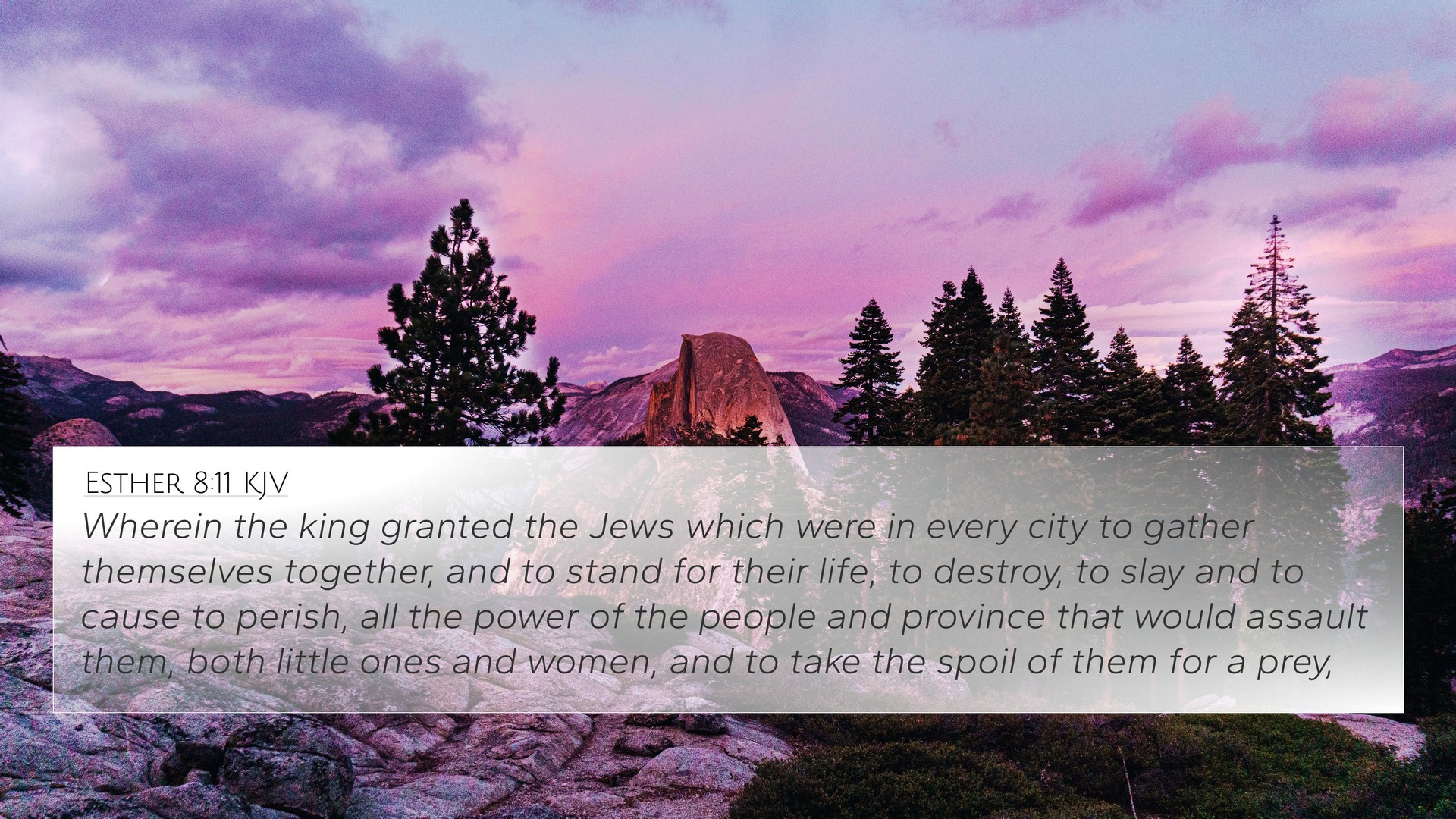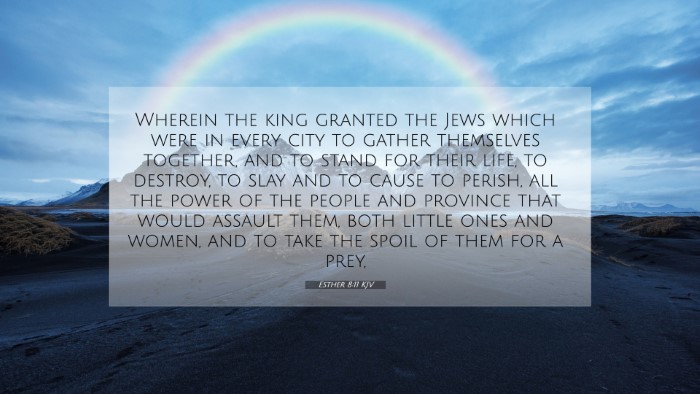Old Testament
Genesis Exodus Leviticus Numbers Deuteronomy Joshua Judges Ruth 1 Samuel 2 Samuel 1 Kings 2 Kings 1 Chronicles 2 Chronicles Ezra Nehemiah Esther Job Psalms Proverbs Ecclesiastes Song of Solomon Isaiah Jeremiah Lamentations Ezekiel Daniel Hosea Joel Amos Obadiah Jonah Micah Nahum Habakkuk Zephaniah Haggai Zechariah MalachiEsther 8:11 Similar Verses
Esther 8:11 Cross References
Wherein the king granted the Jews which were in every city to gather themselves together, and to stand for their life, to destroy, to slay and to cause to perish, all the power of the people and province that would assault them, both little ones and women, and to take the spoil of them for a prey,
Uncover the Rich Themes and Topics of This Bible Verse
Listed below are the Bible themes associated with Esther 8:11. We invite you to explore each theme to gain deeper insights into the Scriptures.
Esther 8:11 Cross Reference Verses
This section features a detailed cross-reference designed to enrich your understanding of the Scriptures. Below, you will find carefully selected verses that echo the themes and teachings related to Esther 8:11 KJV. Click on any image to explore detailed analyses of related Bible verses and uncover deeper theological insights.
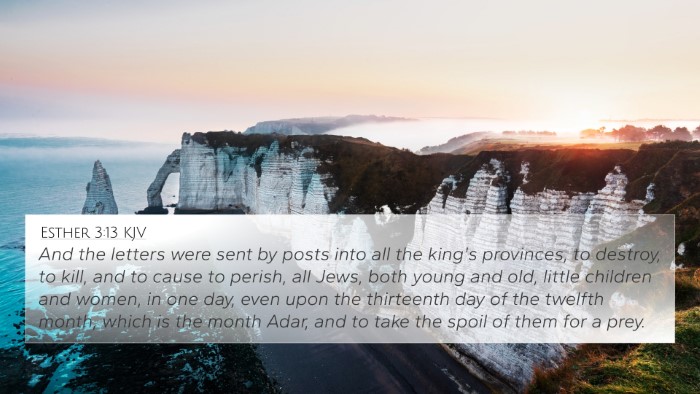
Esther 3:13 (KJV) »
And the letters were sent by posts into all the king's provinces, to destroy, to kill, and to cause to perish, all Jews, both young and old, little children and women, in one day, even upon the thirteenth day of the twelfth month, which is the month Adar, and to take the spoil of them for a prey.
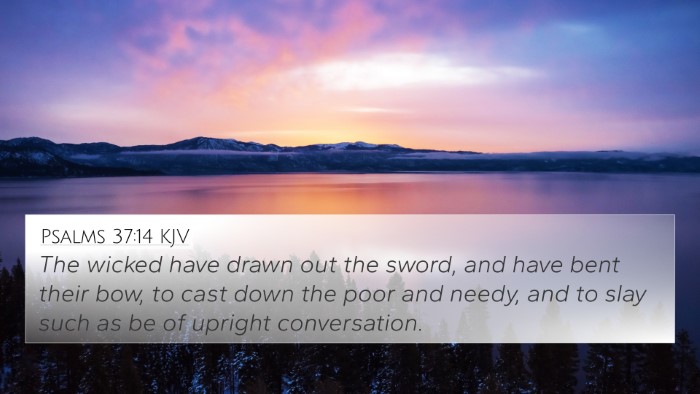
Psalms 37:14 (KJV) »
The wicked have drawn out the sword, and have bent their bow, to cast down the poor and needy, and to slay such as be of upright conversation.
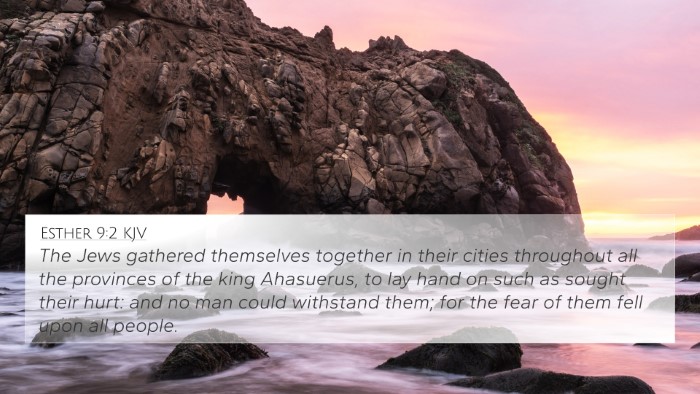
Esther 9:2 (KJV) »
The Jews gathered themselves together in their cities throughout all the provinces of the king Ahasuerus, to lay hand on such as sought their hurt: and no man could withstand them; for the fear of them fell upon all people.
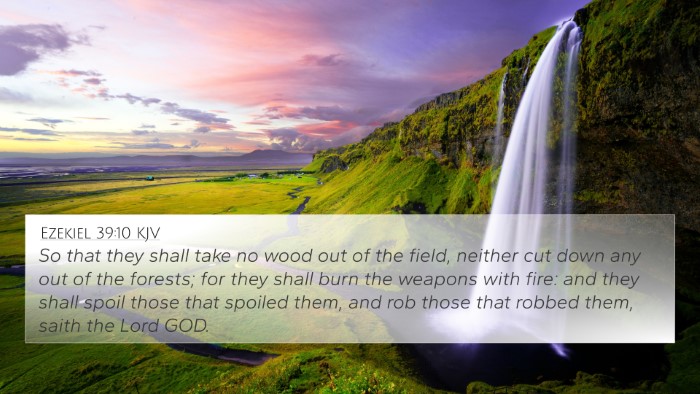
Ezekiel 39:10 (KJV) »
So that they shall take no wood out of the field, neither cut down any out of the forests; for they shall burn the weapons with fire: and they shall spoil those that spoiled them, and rob those that robbed them, saith the Lord GOD.
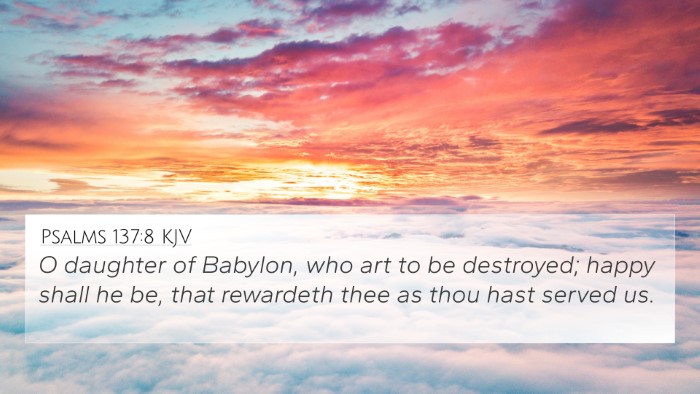
Psalms 137:8 (KJV) »
O daughter of Babylon, who art to be destroyed; happy shall he be, that rewardeth thee as thou hast served us.
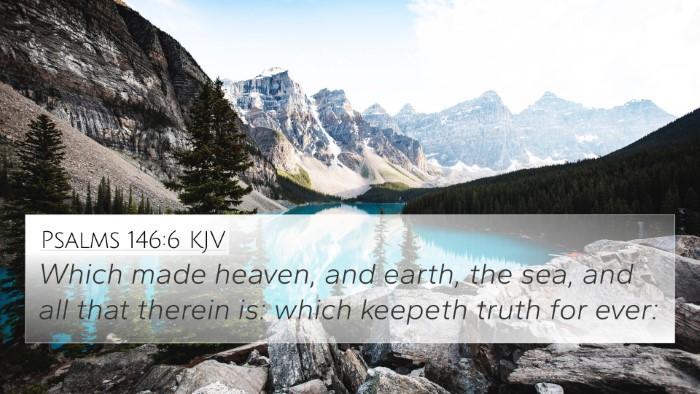
Psalms 146:6 (KJV) »
Which made heaven, and earth, the sea, and all that therein is: which keepeth truth for ever:
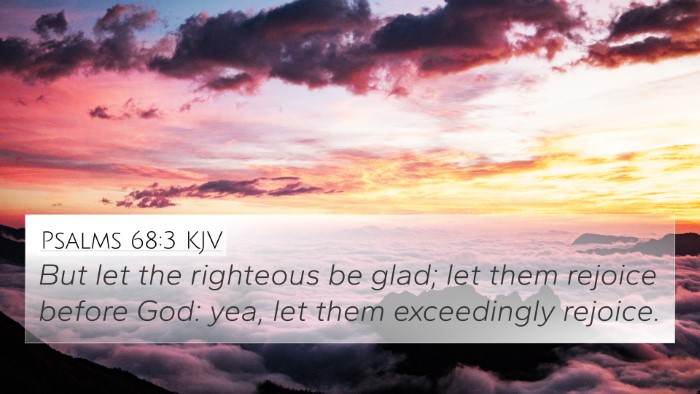
Psalms 68:3 (KJV) »
But let the righteous be glad; let them rejoice before God: yea, let them exceedingly rejoice.
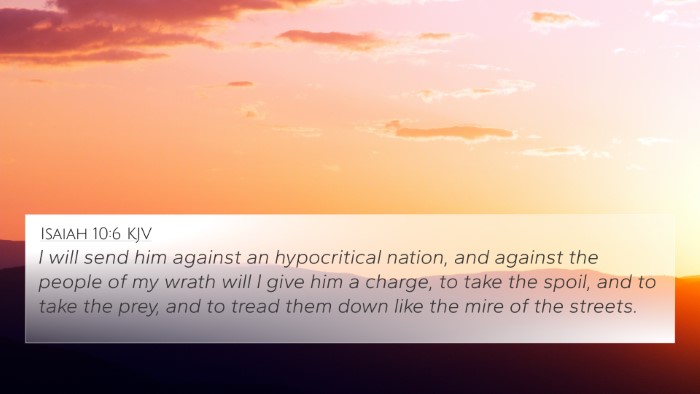
Isaiah 10:6 (KJV) »
I will send him against an hypocritical nation, and against the people of my wrath will I give him a charge, to take the spoil, and to take the prey, and to tread them down like the mire of the streets.
Esther 8:11 Verse Analysis and Similar Verses
Understanding Esther 8:11
Esther 8:11 states: "By these letters the king permitted the Jews who were in every city to gather together and defend their lives—to destroy, kill, and annihilate all the forces of any people or province that would attack them, with their children and women, and to plunder their possessions." This verse illustrates a pivotal moment in the Book of Esther, highlighting themes of justice, empowerment, and divine intervention.
Context and Summary
This passage occurs after King Ahasuerus allows Esther and Mordecai to counteract the decree against the Jews. The significance of this moment lies in the fact that it transitions from a position of despair to empowerment for the Jewish people, who were previously on the brink of annihilation.
Key Themes
- Divine Providence: The events leading to this point display God's sovereign hand guiding circumstances for His people's deliverance.
- Justice and Retribution: The verse highlights the right of the Jews to defend themselves and seek justice against those who would harm them.
- Collective Action: Emphasizing unity among the Jews, it reflects on the importance of community in times of trial.
Verse Analysis
According to Matthew Henry's commentary, this verse signifies a dramatic turn of events. It emphasizes the need for self-defense as the Jewish people were granted the authority to stand against their adversaries. Henry notes that the use of strong language ("destroy, kill, and annihilate") indicates the seriousness of the threat they faced and the urgency of their response.
Albert Barnes adds that the issuing of this decree shows not only vindication for the Jews but also a recognition of their plight by the king. Furthermore, the permission to engage in plunder indicates a significant reversal of fortunes, turning the fear of the Jews into the fear of their enemies. Barnes stresses the moral implications of such powerful imagery.
Adam Clarke reminds readers to consider the historical context as well. The Jewish people were without agency under Persian law, and this decree provided an unprecedented opportunity for defense and survival. It also serves to demonstrate the power of advocacy as seen through Mordecai and Esther's efforts.
Bible Verse Cross-References
This verse connects to several other scripture passages that enhance its meaning:
- Exodus 17:14-16: The Lord's command to Moses to remember the Amalekites reflects God’s awareness of His people's struggles and their right to defend themselves.
- Psalm 37:14-15: This Psalm speaks of the wicked drawing swords against the righteous and the divine promise of justice, echoing the themes found in Esther.
- Proverbs 21:15: "The exercise of justice is a joy to the righteous, but it is terror to the evildoers," reaffirming the moral implications of justice delivered in Esther 8:11.
- Jeremiah 30:16: God promises to restore His people and punish those who oppress them, paralleling the deliverance seen in Esther.
- Luke 4:18-19: Jesus’ proclamation of proclaiming good news to the oppressed connects to the liberation story within Esther.
- Romans 12:19: Paul’s command to not take revenge but leave room for God’s wrath aligns with the moral questions raised in the Esther account.
- Revelation 6:10: The souls of martyrs calling for justice also reflects a call for vindication seen in Esther's urgency for the Jewish people's protection.
Connections Between Bible Verses
Esther 8:11 not only stands alone in its narrative but serves as a bridge enhancing our understanding of several Biblical principles:
- It links the narrative of the Jewish exiles’ struggles during the Persian Empire with God's ongoing plan for His chosen people.
- The verse echoes themes of deliverance found in other Old Testament accounts, such as the Exodus, where the Israelites were granted freedom from oppression.
- It also reflects New Testament themes of justice, redemption, and advocacy exemplified by Christ in His ministry.
Cross-Referencing Bible Study Methods
A comprehensive Bible cross-reference guide can further unpack the depths of Esther 8:11. Here are some methods and tools for effective cross-referencing:
- Bible Concordance: Utilizes a detailed index to help locate verses that share similar keywords or themes.
- Cross-reference Bible Study Guides: Specific tools designed to teach connections between verses and their contexts.
- Online Bible Resources: Websites and databases offering thematic studies and verse comparisons.
- Topical Bible Studies: Group studies that explore subjects through various scriptures, deepening understanding.
Inter-Biblical Dialogue
The inter-Biblical dialogue between Esther and other scriptures enriches the reader's understanding of God's overarching narrative. Not only does Esther 8:11 affirm the right to defend oneself, but it also places the text within a wide spectrum of biblical theology concerning justice, retribution, and divine favor. It illustrates how Esther's story engages with and informs the broader scriptural context.
Conclusion
Esther 8:11 is more than a historical account; it encapsulates themes of divine intervention, justice, and community resilience. By exploring its connections to other scriptures, we deepen our appreciation for the complexity and richness of the biblical message. Using the tools for cross-referencing and understanding these links helps foster a more profound understanding of how God interacts with His people across generations.
